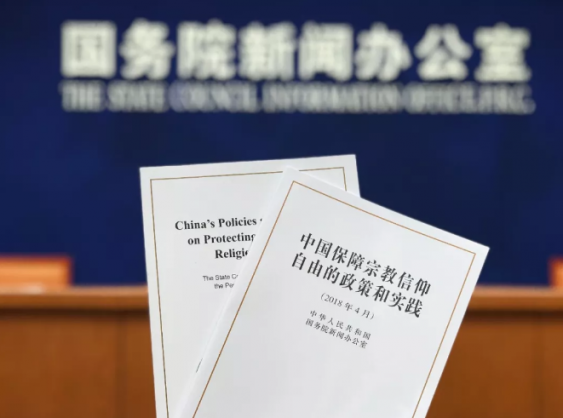On April 3, 2018, the State Council Information Office released a series of statistics about Chinese religions in a white paper titled "China's Policies and Practices on Protecting Freedom of Religious Belief".
The overall picture
According to the paper, "The major religions practiced in China are Buddhism, Taoism, Islam, Catholicism, and Protestantism; with a total of nearly 200 million believers and more than 380,000 clerical personnel...There are around 222,000 Buddhist clerical personnel and over 40,000 Taoist clerical personnel. The 10 minority ethnic groups, the majority of which believe in Islam, total more than 20 million with about 57,000 clerical personnel. Catholicism and Protestantism have 6 million and 38 million followers in China respectively, with 8,000 and 57,000 clerical personnel. China also has many folk beliefs which are closely linked to local cultures, traditions, and customs, in which a large number of people participate."
Religious groups
Meanwhile, it claims that there are approximately 5,500 religious groups in China, including seven national organizations: the Buddhist Association of China, Chinese Taoist Association, China Islamic Association, Chinese Catholic Patriotic Association, Bishops' Conference of Catholic Church in China, National Committee of the Three-Self Patriotic Movement of the Protestant Churches in China, and China Christian Council.
Places of worship
It claims, "At present, there are about 144,000 places of worship registered for religious activities in China, including 33,500 Buddhist temples (including 28,000 Han Buddhist temples, 3,800 Tibetan Buddhist lamaseries, and 1,700 Theravada Buddhist temples), 9,000 Taoist temples, 35,000 Islamic mosques, 6,000 Catholic churches and places of assembly spread across 98 dioceses, and 60,000 Protestant churches and places of assembly."
Religious texts and literature
It adds, "Several large collections of religious classics, including the Chinese Buddhist Canon, the Chinese Taoist Canon and A Collection of Editions and Commentaries for the Laozi, have been compiled and published...There are now 60 such sutra printing houses, including the one in the Potala Palace, that can print 63,000 different sutras every year. Islamic classics, such as the Koran, have been translated and published in Chinese, Uygur, Kazakh, and Kyrgyz languages. The publication and circulation of the New Collection of Al-Wa'z Speeches series and other reading materials and magazines have exceeded 1.76 million copies. China has printed over 160 million copies of theBible in more than 100 different languages for over 100 countries and regions, including 80 million copies printed in the Chinese language, 11 ethnic minority languages, and braille for churches in China."
Religious education
"By September 2017, there were 91 religious schools in China whose establishment was approved by the State Administration of Religious Affairs (SARA), including 41 Buddhist, 10 Taoist, 10 Islamic, 9 Catholic and 21 Protestant schools. There are six national-level religious colleges, namely, the Buddhist Academy of China, High-level Tibetan Buddhism College of China, Chinese Taoist College, China Islamic Institute, National Seminary of the Catholic Church in China, and Nanjing Union Theological Seminary. At present, more than 10,000 students study in these religious schools whose graduates total more than 47,000."
Social security for religious clerical personnel
"At the end of 2013, 96.5 percent of clerical personnel were covered by medical insurance, 89.6 percent by the old-age insurance, and all qualified personnel by subsistence allowance welfare. Almost all clerical personnel were covered by the social security system in China."
Religious public charity activities
"According to preliminary statistics, religious groups have established more than 400 nursing homes offering approximately 29,000 beds."
- Edited by Karen Luo









